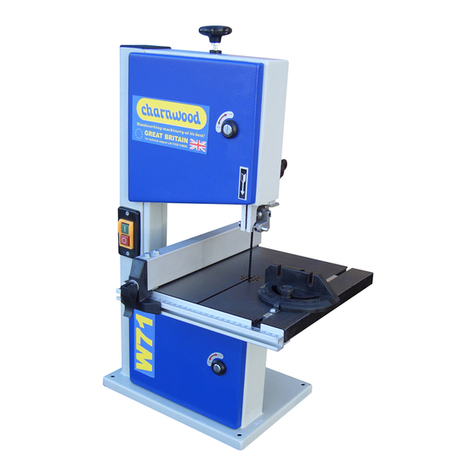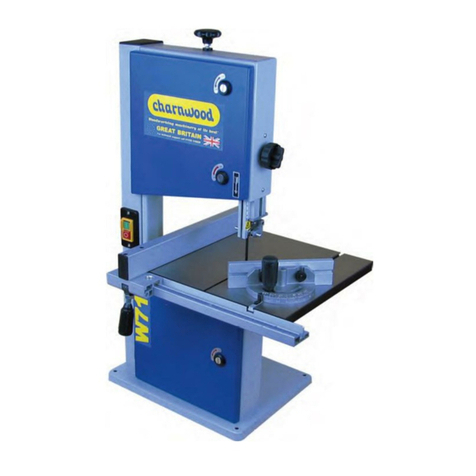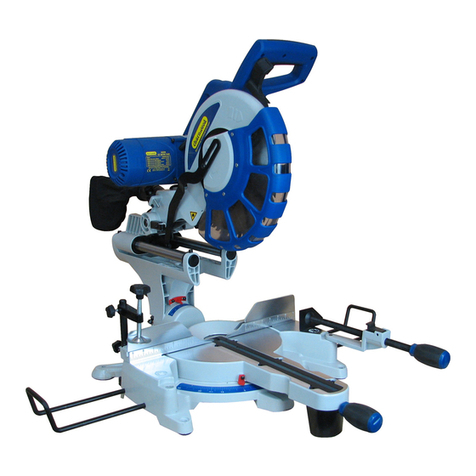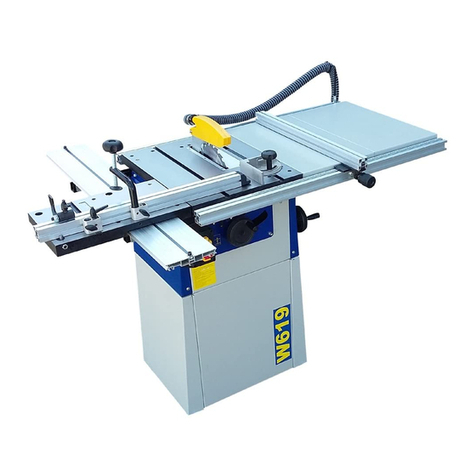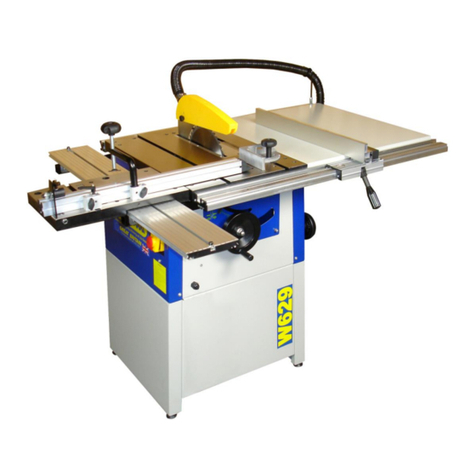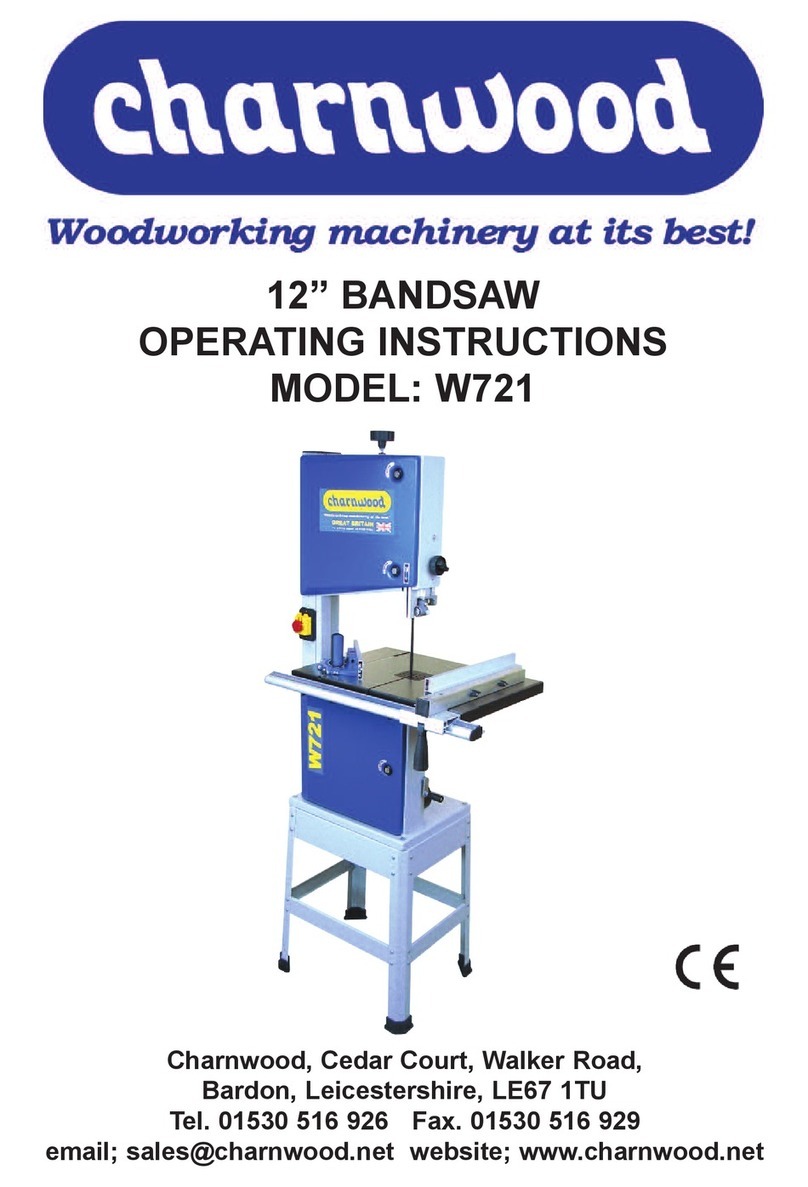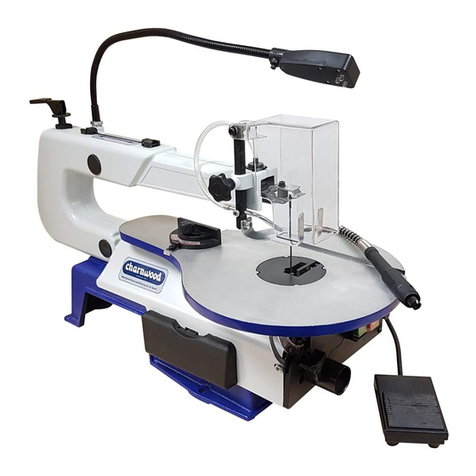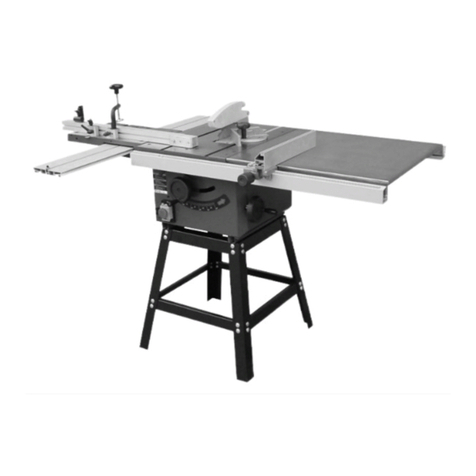GENERAL SAFETY RULES
WARNING: Do not attempt to operate the machine until you have read thoroughly and
understood completely all instructions, rules, etc. contained in this manual. Failure to comply
may result in accidents involving fire, electric shock, or serious personal injury. Keep this
owner's manual and review frequently for continuous safe operation.
1. Know your machine. For your own safety, read the owner's manual carefully. Learn its application and
limitations, as well as specific potential hazards pertinent to this machine.
2. Make sure all tools are properly earthed.
3. Keep guards in place and in working order. If a guard must be removed for maintenance or cleaning,
make sure it is properly replaced before using the machine again.
4. Remove adjusting keys and spanners. Form a habit of checking to see that the keys and adjusting
spanners are removed from the machine before switched it on.
5. Keep your work area clean. Cluttered areas and workbenches increase the chance of an accident.
6. Do not use in dangerous environments. Do not use power tools in damp or wet locations, or expose
them to rain. Keep work areas well illuminated.
7. Keep children away. All visitors should be kept a safe distance
8. from the work area.
9. Make workshop childproof. Use padlocks, master switches and remove starter keys.
10. Do not force the machine. It will do the job better and be safer at the rate for which it is designed.
11. Use the right tools. Do not force the machine or attachments to do a job for which they are not
designed. Contact the manufacturer or distributor if there is any question about the machine's suitability for
a particular task.
12. Wear proper apparel. Avoid loose clothing, gloves, ties, rings, bracelets, and jewellery which could get
caught in moving parts. Non-slip footwear is recommended. Wear protective hair covering to contain long
hair.
13. Always use safety glasses. Normal spectacles only have impact resistant lenses. They are not safety
glasses.
14. Do not over-reach. Keep proper footing and balance at all times.
15. Maintain the machine in good condition. Keep the machine clean for best and safest performance.
Follow instructions for lubrication and changing accessories.
16. Disconnect the machine from power source before servicing and when changing the blade.
17. Never leave the machine running unattended. Turn the power off. Do not leave the machine until it
comes to a complete stop.
18. Do not use any power tools while under the effects of drugs, alcohol or medication.
19. Always wear a face or dust mask if operation creates a lot of dust and/or chips. Always operate the tool
in a well ventilated area and provide for proper dust removal. Use a suitable dust extractor.
ADDITIONAL RULES FOR CIRCULAR SAWS
1. Ensure that the saw table is clear of off-cuts, tools or anything else that might foul the work-piece.
2. If your saw has a dust extractor hose connected to the crown guard, ensure that it is held clear of the
table and will not foul the work-piece as it passes over the table.
3. When cutting large sheets of material or long boards use one or more roller stand(s) to support the work
or have a competent helper to support it as it feeds off the rear of the table.
4. Never use the saw without the riving knife and check that it is in line with the blade before using the saw.
5. Always use a brush to clear the table of dust or debris. NEVER use your hands, especially when the
machine is running.
6. ALWAYS USE A PUSH STICK WHEN IT IS NECESSARY TO PUSH ANY PIECE OF MATERIAL OF
SUCH SIZE THAT IT WOULD BRING YOUR HANDS WITHIN 30 CM OF THE BLADE.
7. Do not cut material that is badly warped or which has screws or nails in it
8. Be extra vigilant when cutting stock which has loose knots in it as these may fly out of the saw.
9. NEVER remove the table insert when the saw is running.
10. To avoid exposure to hazardous dust, do not use this saw without connecting it to a dust extractor.

